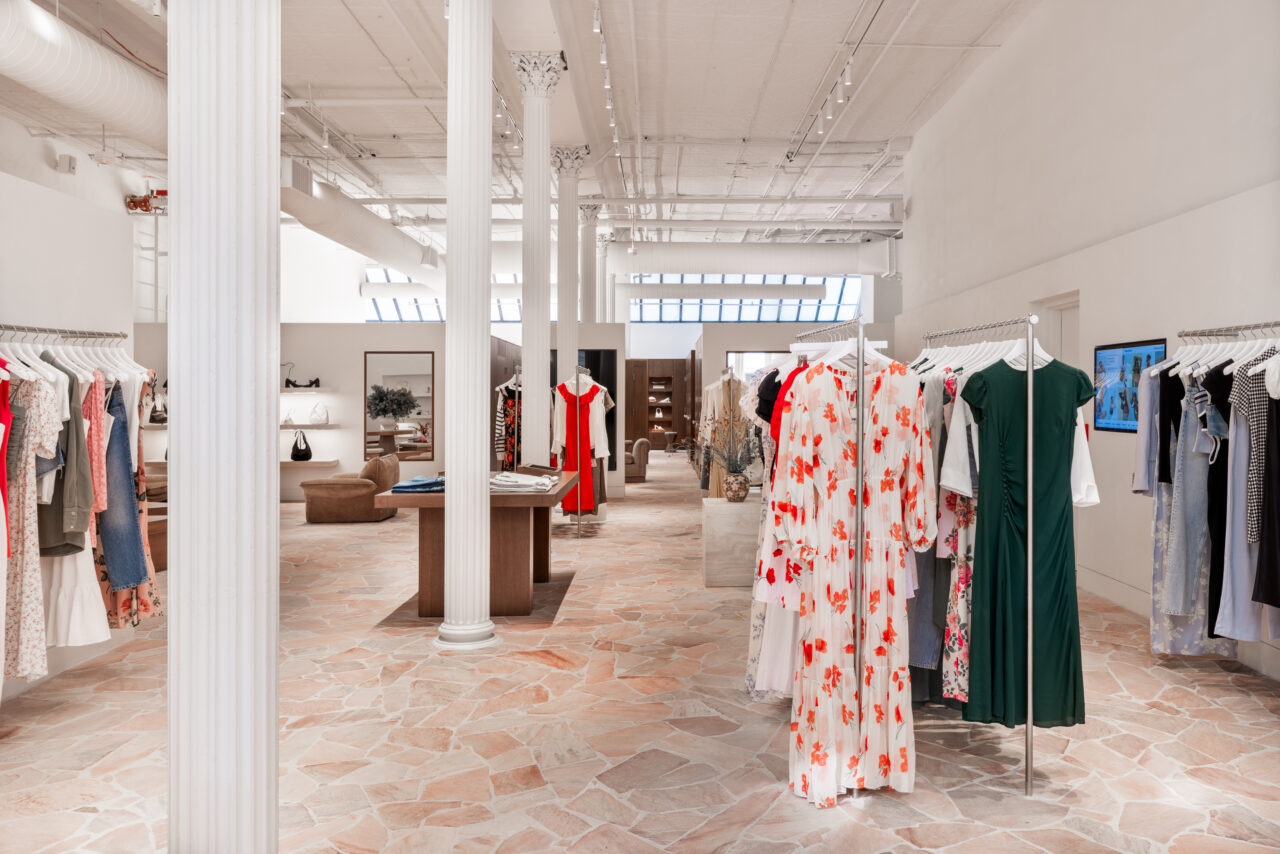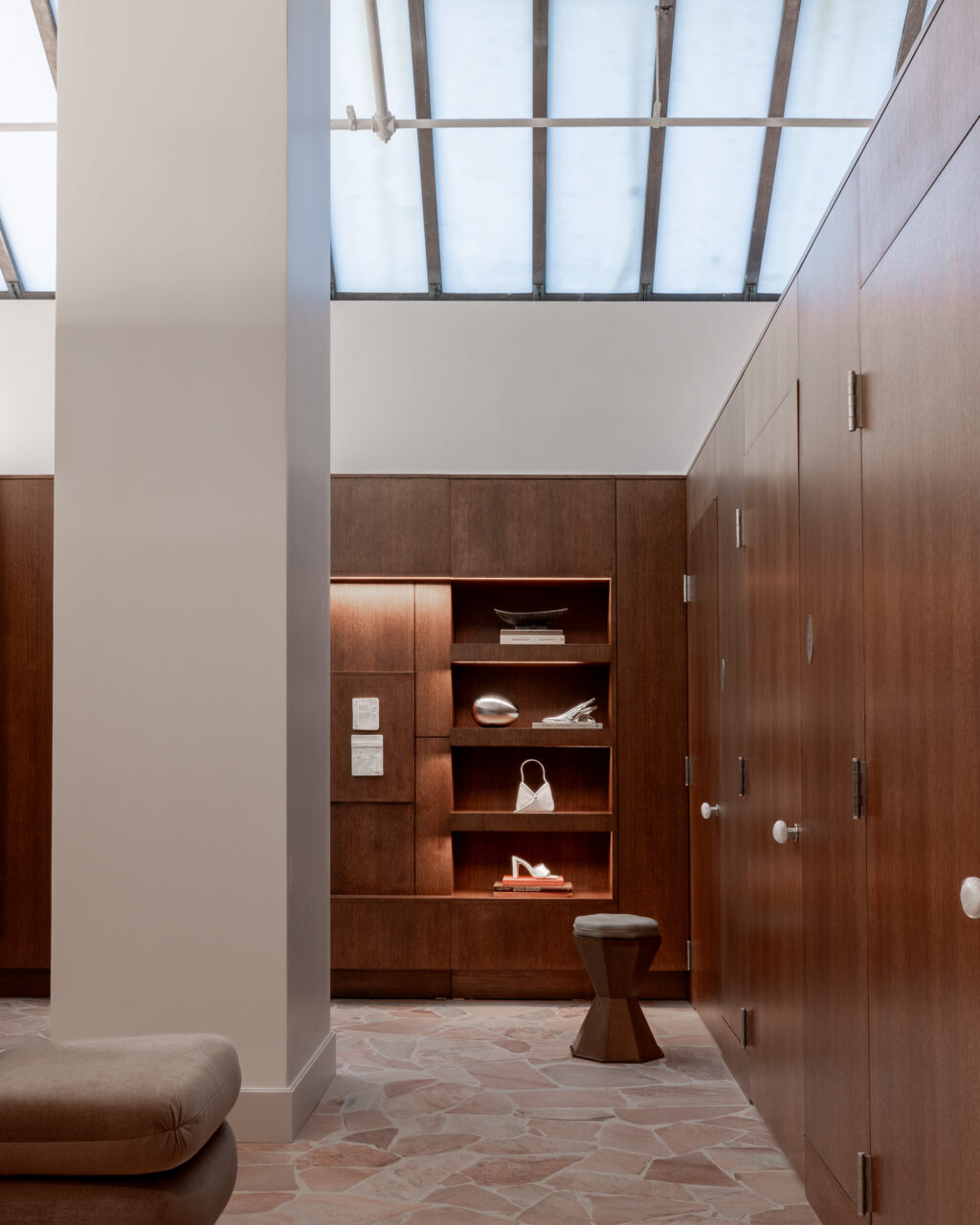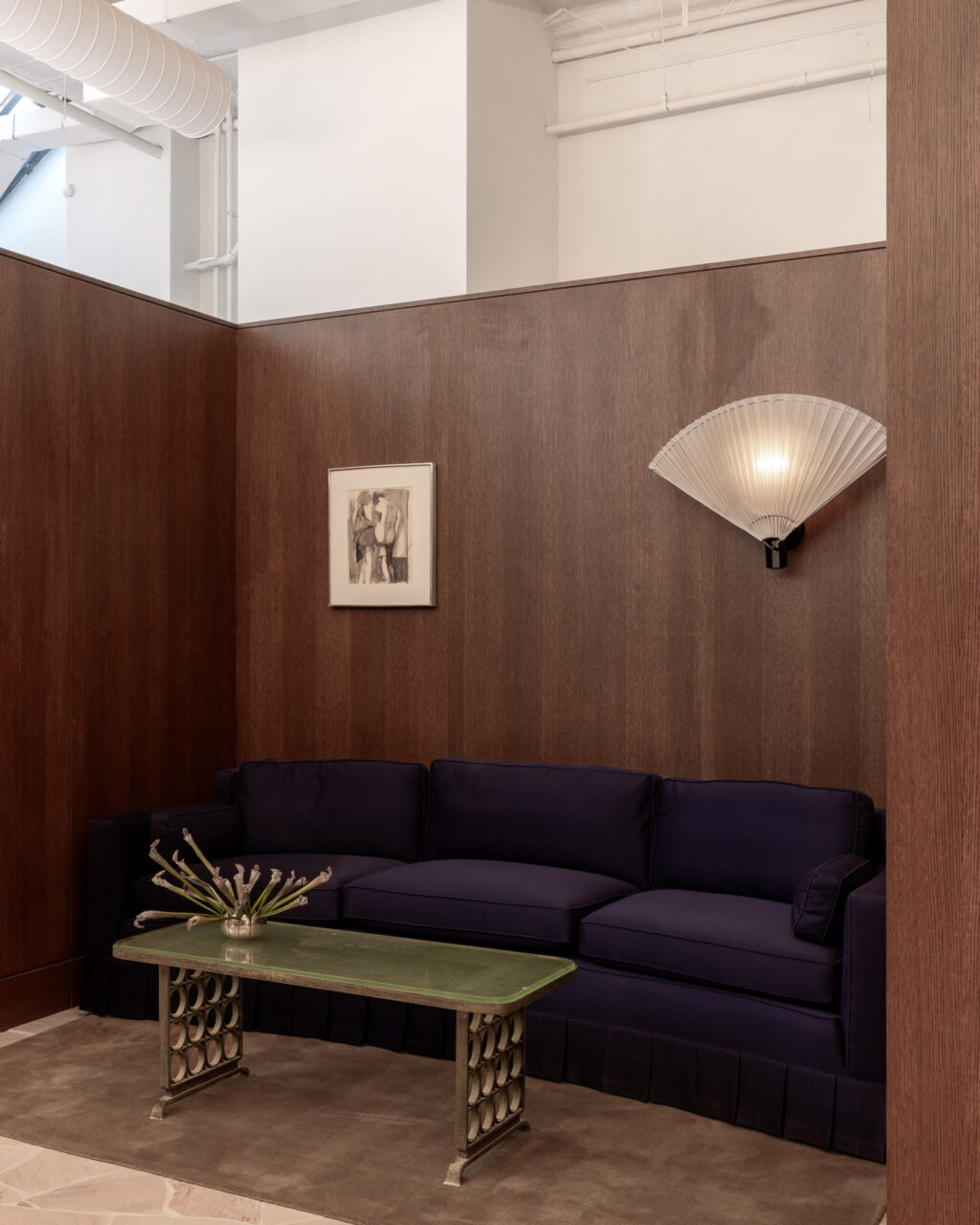The warm, earthy style of Reformation’s New York flagship belies the technology-driven shopping experiences located within. The environmentally conscious clothing brand consulted with Paris-based outfit Festen Architecture to redesign the space in the city’s Soho neighborhood. The brief was to reconfigure the store in order to work in tandem with their technology-driven retail concept while keeping in line with the brand’s design ethos.

To fulfill the latter half of the goal, the brand worked with Festen to incorporate natural tones like pink quartz flagstone flooring, displays made from stone or wood, and brown and muted ceramics from Sijeo Kim. With the row of skylights toward the back of the store, the color palette establishes a serene and inviting atmosphere while complementing the store’s earth-toned apparel.
Housed within a historic building, the redesign preserves vestiges of the pre-existing space. The architects kept the original columns inside the store in addition to the crown and ceiling moldings. The preservations help elevate the store with a sense of elegance, honor the site, and allow it to more cohesively integrate into the neighborhood.


At first glance, the space feels grounded and organic, but technology drives the customer experience. In the back, custom-built wooden fitting rooms each feature a touch-pad (also found in the front of the store) that allows customers to virtually browse through the store’s offerings and select their size. The rooms are designed with a two-way door closet, so the Reformation team can acquire the selections and hang them in there. When customers open the wardrobe, they can more easily try on clothes without having to go in and out.
The fitting rooms also avoid the stark, fluorescent lights commonly found there. Instead, Festen built the rooms to integrate LED light strips that perimeter the door. A control pad beside it allows customers to adjust the lighting and view the apparel under different conditions.
A niche built into the millwork provides a resting place for customers not trying on clothes or waiting for others to finish doing so. The small seating area is a welcoming surprise when venturing deeper into the back of the store, as it’s tucked away behind the wood-framed mirror divider.


Furniture in fact dominates the space, perhaps even more than the clothing racks do. Another seating niche, featuring a blend of modern and vintage furniture, recreates a living room vignette in front of the store’s shoes. It further emphasizes the space’s sense of welcomeness and warmth, helped along by the area rugs from Les Edition de Tapis underfoot. The clothing company opted to showcase less racks of the same clothes to keep the space open and minimize excess clutter.
Reformation’s technology-infused retail concept prioritizes an ease of shopping to improve the customer experience. With Festen’s help, the redesign both visualizes and furthers this agenda by adding a warm and inviting touch to the typically alienating technology.
